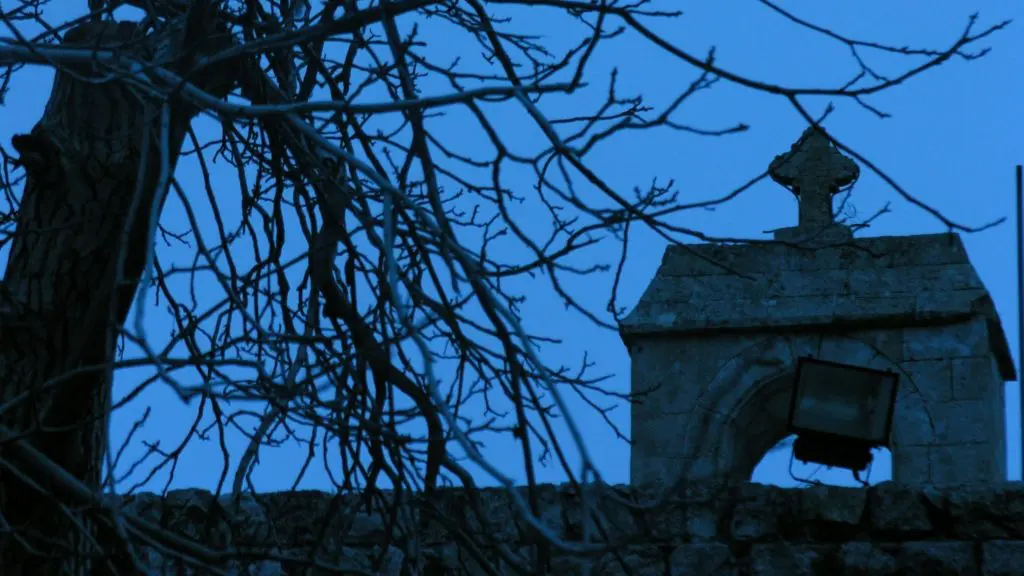Nadya Williams, a Princeton-trained classicist-turned-homeschooling mom, released her first book, Cultural Christians in the Early Church: A Historical and Practical Introduction to Christians in the Graeco-Roman World, over six months ago. After the initial flurry of twitter accolades and largely positive reviews, I hopped on the train of reading it comparatively late. Fortuitously, my timing aligned with Williams’s “slow read” series on her Substack, which offers questions and conversation-starters to go with each chapter. In the comment sections of these posts, I was even able to dialogue a bit with the author, affording me a more thorough understanding of her nuanced perspectives that did not make it into the text.
The main reason I hesitated to pick up this book was because I am not the target audience. I am a cradle Catholic who has spent very little time with evangelical protestant communities. Until now, I had never in my life read a book with the imprint of Zondervan, a well-known evangelical publishing house. Williams both implicitly and explicitly addresses evangelical Christians throughout the text. This makes sense—she is an adult convert who has spent most of her time as a Christian in the Bible Belt. I have spent comparatively little time in the Bible Belt, and certainly none in evangelical churches there. And yet, I couldn’t not read this book.
My interest in the book was primarily motivated by the personal affinity I felt as I learned more about the author, Nadya Williams. Williams left behind a career in classical academia to focus on her family; while I was not as far along in my career at the time, I have made the same choice. Christian women well-versed in both classics and early Christianity are rare birds; I couldn’t wait to get to know her through her book. Fittingly, I spent my undergraduate and graduate education immersed in the early medieval Church—and as a result, I labor under no delusion that the early Christians were en masse more holy than we are today.
This assumption is the target of Nadya’s work. The ‘Cultural Christians’ of whom she speaks are those who allow secular influences to infiltrate and even control their lifestyles in ways at odds with their professed Christianity. She sets out to show through a series of vignettes that the Church has always included these kinds of Christians, and that pastoral figures like St. Paul, St. Cyprian, and St. Augustine offer modern Christians a playbook for dealing with the perennial temptation to join them. With each chapter, she examines a “cultural sin” and documents its manifestation in the early Church. Then, she draws a connection to (what she considers instances of) the same sin in the modern Church and offers commentary and advice on how we can emulate the solutions reached by our forebears in the Faith.
Cultural Christians is written by a scholar, but not primarily for scholars. Distilling academic subject matter for a broad audience is no small task, though a few outstanding intellectuals like historian Niall Ferguson have been able to build entire careers on it. Many such projects fail to connect with their intended audiences, or worse, perpetuate popular myths by oversimplifying complex topics that are then gobbled up by unwitting readers. (One notorious example is Stephen Greenblatt’s The Swerve, a Pulitzer prize-winning repackaging of the humanist “prejudice against medieval Christianity” for modern readers.)
Williams, for the most part, succeeds in this difficult endeavor. Focused on the presentation of evidence and real-world applications of said evidence, she does not neglect the scholarship and textual analysis that underlies her argument. Alongside her keen breakdown of primary sources, she integrates a great deal of secondary sources from renowned classicists such as Peter Brown and Mary Beard. Readers with a more-than-cursory interest in the subject matter will appreciate the ample references to further reading. And most refreshingly, Williams does not fall into the trap of considering herself the sole authoritative source on her subject matter—the book does not paint the whole picture of cultural Christianity, nor does it need to.
Where her writing really shines is in her exploration of how Christian and classical texts inform each other—and reveal the strains of cultural Christianity that have plagued the church family since the first century AD. Her expert syntheses of classical and Christian sources exquisitely weave together varying themes from Vergil to Augustine. Her juxtaposition in the first chapter of the story of Cicero’s prosecution of Verres with the tale of Ananias and Sapphira is a thought-provoking foray into the influences that impacted both pagan and Christian communities in the Roman Republic and Empire. She begins the eighth chapter with a similarly fascinating discussion of the debates between Symmachus and St. Ambrose over the pagan statue of Victoria. Once I finished the book, I found myself yearning for more of these weighty textual analyses; alas, I will have to wait until her upcoming book on motherhood in the early Church is released this fall.
Give the book’s intended audience, it is perhaps unsurprising that some of Williams’s assertions seem almost purposefully poised to irritate a reader from a Catholic or Orthodox Christian background. Passing instances include connecting St. Cyprian’s theology with that of Martin Luther, comparing anti-Donatism to race-based violence within American Christian communities (“heresy is a problem, but so is division”), and summarizing St. Augustine’s City of God as a “manifesto against Christian Nationalism.” A sympathetic reader could attribute these claims to the leanings of the publisher, but they nevertheless stand out. Furthermore, as another reviewer has pointed out, her use of BCE/CE throughout the book is a strange concession to the modern erasure of Christianity’s role in the history. However, many of these smaller quibbles are easy to ignore in light of the fascinating tapestry of real, human, flawed practice of Christianity in late antiquity.
On more modern topics, Williams’s conclusions often reach further than her analysis warrants. She argues, for example, that “religious nationalism has no place in our worldview” as a result of Augustine’s warning not to idolize Roman history. Her idea of “Christian Nationalism” is simultaneously vague and narrow, rooted in terms like American exceptionalism and “not addressing historical trauma.” Readers who espouse differing views, positive or negative, of “Christian Nationalism” will cringe at this conclusion. That being said, any reader can appreciate her astute consideration of Augustine’s advice for our time, even if he chooses to apply it slightly differently than the author intends.
One argument in particular fails to ‘pass the vibe check,’ to use the contemporary phrase. In the final chapter, titled “The Siren Call of the Desert,” Williams argues that the early eastern ascetics such as St. Anthony of the Desert and St. Simeon Stylites—venerated almost universally by the Christian world for a millennium after their deaths—were almost entirely inspired by pagan practices. That makes them, in Williams’ view, cultural Christians who had abandoned a Biblical worldview. Calling to mind the public stunts of the Greek philosopher Diogenes, she writes “Diogenes’s extreme asceticism was an obvious predecessor of the asceticism that the Christian desert saints embraced.” She references St. Paul’s address on the duties of the episkopoi in 1 Timothy 3 to argue that choosing a celibate lifestyle removed from the world is functionally pagan for any believer: “The qualifications for elders leave no room for the desert ascetics.” Notably, she uses the term “elders” rather than the typical “bishops” or “overseers,” without qualifying her choice of translation. (I could only find one, very modern, biblical translation that uses this term.) After vaguely opining on the relational nature of Christianity, she doubles down on her argument: “By leaving the church to move into the desert, the Desert Fathers and Mothers rejected that model.” Later on, she concludes “Ultimately, by choosing the desert, they chose themselves and their own desires rather than striving to be a blessing to the world around them.”
Oddly enough, she fails to mention the Essenes, a Jewish mystical movement with which St. John the Baptist is often associated that espoused similar ascetic and monastic practices to that noted Christian prophet. The Essenes offer a much more contemporary cultural precedent for Eastern asceticism than Diogenes, whose antics are far further removed from the desert Mothers and Fathers by temporal, cultural, and religious barriers. Perhaps more pertinently, Williams omits Jesus’ own asceticism (Matthew 4) and Paul’s admonitions regarding the higher calling of celibacy (1 Corinthians 7:7-8).
This section is rampant with equivocation between inspiration by the pagans (as in the case of the supposed influence of Diogenes) and adoption of their overt sins (like a culture of sexual objectification, explored in Chapter Three). Many early Christian practices, from Church architecture to apologetics against heresy, borrowed the wisdom of the pagans. St. Augustine himself famously recommended this practice in the vein of plundering the Egyptians of their gold (De Doctrina Christiana, II.40). Making this distinction and, perhaps, exploring examples of how early Christians could righteously appropriate pagan wisdom would have been a welcome direction for this chapter. Instead, Williams treats the earliest monks and hermits as de facto ridiculous exhibitionists rather than part of a sacred tradition that is still continued in monasteries all over the world. This attitude—one which flies in the face of the Catholics and Orthodox who still venerate these saints—sadly undermines the more astute argumentation of her previous chapters.
Other reviews (here and here) have observed that Williams inserts personal political conclusions into her modern analogues. I will mention only in passing that her focus on particularly right-wing evangelical issues excludes an entire swath of “cultural Christians” such as the so-called “cafeteria Catholics,” one finds all over Europe and, in America, along the coasts and in the White House. Political or otherwise, many of her applications of cultural Christianity in the early Church to modern times seem perfunctory. I was intrigued, for example, that she mentioned Marjorie Taylor Greene’s support of Russia (not discernibly related to the topic of the book) but not Marjorie Taylor Greene’s Donatist tendencies. Marjorie Taylor Greene was baptized Catholic but re-baptized in a megachurch as an adult; given that an entire chapter of Cultural Christians is devoted to Donatism, the connection would be compelling. Altogether, the strength of the book lies in the weighty analysis of classical and Christian primary sources rather than the extrapolations, although Williams’s broad conclusion (“we should never idealize the people of the past”) is one with merit.
So why, given these qualms, did I find myself recommending this book repeatedly to friends and even acquaintances? Because it is a book worth reading. Furthermore, the project on which Nadya Williams has embarked—tracing intersecting spheres of influence between classical Rome and the early Church—is one that is far too rare. Because of the way classical academic departments tend to work, the intersection of Christianity and classics is a bit of an esoteric pursuit (I know, because I pursued it). Medieval Studies, Byzantine studies, and the special field of Late Antiquity are often siloed off from classics. Furthermore, outside of academia, many Christians eschew academic sources on the Faith out of an understandable suspicion of secular treatment of Christian tenets and people.
Quite refreshingly, Cultural Christians in the Early Church treats Christian and non-Christian society in Late Antiquity as two inextricably linked spheres rather than independent circles on a detached Venn diagram. Practicing Christians who have the rare combination of academic credentials and the charism of writing for a popular audience should be supported, applauded, and discussed. I hope Cultural Christians in the Early Church is the first of many to encourage Christians and classicists alike to focus on the intersection, rather than the distinction, between classical studies and the study of the early Church.







